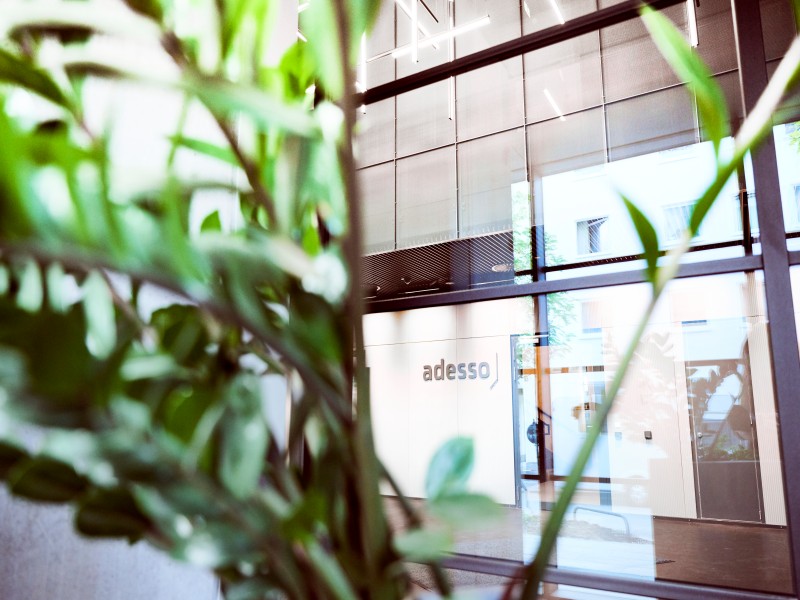29. June 2023 By Michael Westermeier
How to make an update to Industry 4.0 work – digital retrofitting using retrofit sensor technology
In the industrial sector, SME production is still seen as lacking digitalisation in comparison to other parts of the industry – even though there is enormous potential waiting to be exploited here. In fact, there is even a huge gap between the few production sites that are fully digitalised and the majority of them that are still completely analogue. And yet, the same is true for the German SME sector: global industrial manufacturing is undergoing a transformation that is increasingly moving towards digitalisation. Modern manufacturing processes are constantly monitored, analysed and digitally optimised so that companies are not squeezed out of the market as a manufacturer and are able to compete in the future.
The opportunities of digitalisation in mechanical engineering
The core objectives of innovative mechanical engineering have always been to optimise the utilisation of machines and to simplify maintenance. Introducing digitalisation today also enables cloud systems with seemingly constantly increasing computing power and process control to be used in real time. However, it usually increases the complexity of the plant considerably. In addition, digitalisation provides manufacturing companies with new opportunities to monitor their own products and insights into the behaviour of customers with these digital products. An example of this is integrating a fully automated condition monitoring system into the production plant, which in turn creates a database that can be used for far-reaching predictive maintenance – that is, (AI) automated predictive maintenance.
However, as we described at the beginning, many SMEs today are faced with heterogeneous machinery with partly old equipment that, at first glance, is miles away from digital networking. Or they own a lot of machines made by different manufacturers, which could perhaps be networked individually, but the lack of interfaces and standards mean they can only be digitalised using custom methods.
An interesting digital solution for operators of this type of manufacturing plant is retrofit sensor technology. But what does that actually mean? And what opportunities does retrofit sensor technology offer SMEs?
What can retrofitting achieve?
When we hear the word retrofit, our minds usually jump straight to the notion of digitalising old machines and plants. While this is generally true, there is also a second side to the coin: only a small sub-section of retrofitting focuses on connecting old machines. Retrofit sensor technology can often also be used as an extremely cost-effective way to expand modern machines or ones that have already been networked. Or it can be used to harmonise heterogeneous machinery across manufacturers.
This solution offers two relevant advantages that pay off for every company:
- The holistic monitoring and optimisation of the service life of plants and machines across the entire inventory.
- Reducing production costs by increasing productivity and quality by monitoring and increasing machine availability. For example, maintenance can be coordinated with planned downtimes.
Retrofit sensor technology is not an end in itself – having the right use case is crucial
But despite the desire for rapid digitalisation, it is important not to lose sight of the actual use cases. Retrofit solutions naturally offer many advantages, but the sensor technology must always be specifically suited to the respective application in order to pay off in the long term. In the end, it is of no use to anyone to generate and store vast amounts of data if there is no clear reason to use it.
A good example are plug-and-play systems that use retrofit sensor technology, which are often offered as starter kits. These are sets that usually consist of a hardware and a software component and offer a simple and inexpensive entry into the digital networking of machines using IIoT technology. However, if a company does not have a clear concept for how it plans to use the data, and has not sought out professional and technological consultancy, design and parameterisation before implementing the kits, then these sets do nothing more than fill databases with meaningless information and do not bring any added value for production and the company.
If a company is to maximise the value of the digital retrofit solution, then it is vital to use this technology only for the parts, components or machine sections where there is actually potential for optimisation and levers large enough to enable this. To this end, the critical processes and the use cases behind them must first be analysed and evaluated in detail with all the experts.
Used correctly, retrofit sensor technology offers far-reaching organisational, process-related and monetary advantages over simply acquiring new machines and flexibly adapting to constantly changing conditions.
Another reason why retrofitting is worthwhile
The most frequently mentioned advantage in connection with retrofit sensor technology is undoubtedly the amount of costs the digital retrofit solution saves compared to purchasing a new machine. But in reality, in my capacity as an expert, I notice time and again that this aspect is only makes up a minute element of where companies really benefit.
In my experience, the greatest advantage of digitalising existing machines with retrofit sensor technology (and the one that mostly goes unnoticed) is the fact your employees can still operate the machine as if nothing had happened. This is because they do not require any new instructions, even though your machine is now suddenly networked and has a range of new digital functions. Your employees can interact with the machine as before and thus remain productive throughout without the need for extensive training.
Retrofit sensors also automatically contribute to what is known as ‘sensor fusion’. This means the merging and linking of different process measurement values in order to be able to generate detailed analyses from events and measurement values. Retrofit sensors thus offer a cost-effective way of quickly gaining knowledge from machines and using it efficiently in proof of concepts, for example.
An important and final point is also that retrofit sensors can be used to comply with and monitor emerging and changing legal requirements and regulations. This again eliminates the need to purchase new machinery. Newly introduced regulations designed to increase and monitor energy efficiency or newly emerging requirements for documentation created by hygiene directives can also be implemented, as can many other regulations that appear in the future.
Retrofit sensor technology can offer manufacturing companies, especially those in the German SME sector, the opportunity to move from being a market competitor to a digital pioneer instead of just reacting – usually too late – to the constantly changing market.
Would you like to find out more? Our IIoT experts not only support you in the development of suitable software, but also help you select suitable sensor technology and take over the coordination with corresponding hardware manufacturers. Feel free to get in touch with us!
You can find out more about IoT at adesso on our website or in our blog articles with an IoT focus.
You can find more exciting topics from the adesso world in our previously published blog articles.

